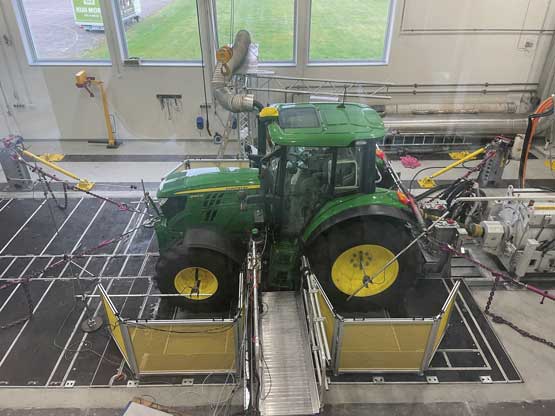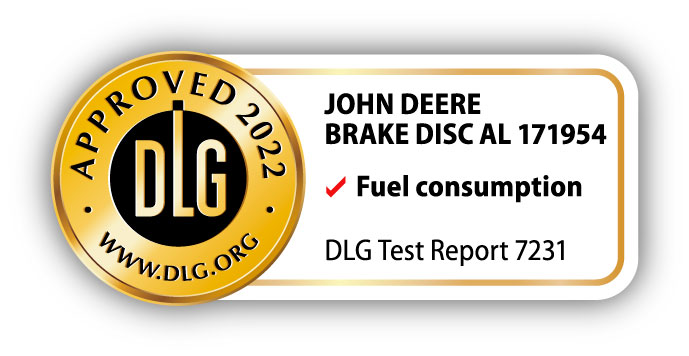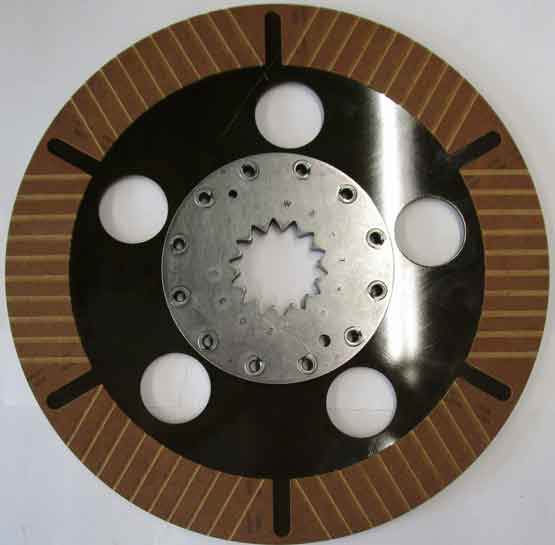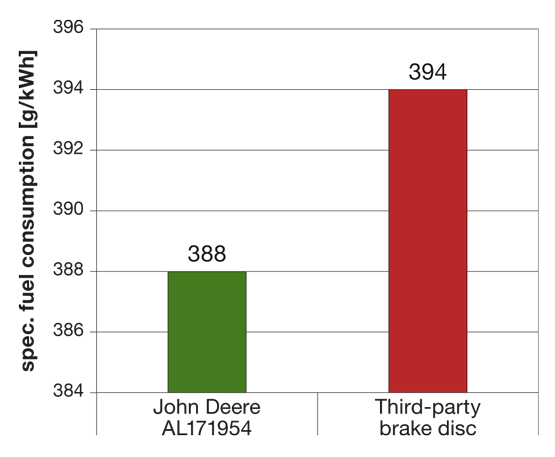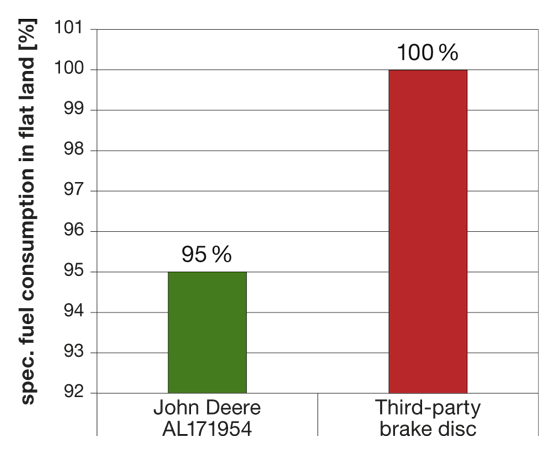John Deere AL171954 brake disc for tractors
DLG-APPROVED: "Fuel consumption on the rolling testbed"
The quality mark
A test mark “DLG-APPROVED for individual criteria” is awarded for agricultural products which have successfully fulfilled a scope-reduced usability testing conducted by DLG according to independent and recognised evaluation criteria. The test is intended to highlight particular innovations and key criteria of the test object. The test may contain criteria from the DLG test scope for overall tests, or focus on other value-determining characteristics and properties of the test subject. The minimum requirements, test conditions and procedures as well as the evaluation bases of the test results will be specified in consultation with an expert group of DLG. They correspond to the recognised rules of technology, as well as scientific and agricultural knowledge and requirements. The successful testing is concluded with the publication of a test report, as well as the awarding of the test mark which is valid for five years from the date of awarding.
The DLG test on potential fuel-saving effects of brake discs consists of various test runs that are carried out on the rolling testbed. In view of rising fuel prices and increasing environmental issues, avoidable fuel losses and potential savings are becoming more and more important. In this context, DLG applied a comparison test to measure the effects of different brake discs on a tractor’s fuel economy. This test compares two different brake discs and measures the fuel efficiency in specific transport situations that may be gained by one brake disc as opposed to another.
To the test came the standard-fit John Deere AL171954 discs on a John Deere 6140M AutoPowr™. These discs were compared to discs of a third-party brand. This was done by replacing the original discs by discs from a third-party manufacturer and then repeating the test. The full test consisted of several simulated uphill runs at full load and several flat land runs at low load yet at maximum speed while measuring consumption, ground speed and lugging power.
No further criteria came to the test.
Assessment in brief
The Method
The test method is based on the DLG ‘Powermix’ test framework. The test itself is a comparison test in which a set of brake discs from two different manufacturers are consecutively put to the same test. The first set to come to the test on the rolling testbed was the AL171954 brake discs on a JD 6140M AutoPowr™. For this purpose, the DLG Powermix transport test was simulated on the rolling testbed.
The DLG Powermix transport test simulates two different test courses: one uphill course that requires high lugging power and one flat land course that makes little demands on the tractor’s drawbar power. The elevation profiles of the real road courses had been entered to the test software which reproduced them on the rolling testbed. The load applied on the drawbar was 20.5 tonnes.
The uphill course consists of six sections and is driven with the engine revving at maximum speed. If possible, the engine speed is set up in such a way that it can drop yet not exceed its maximum range significantly. The measurements are consistently recorded and the results of all six runs are included in the evalution. The six runs form one test unit. Each test unit is repeated three times, with only the recordings from the last two test units being included in the evaluation, because the first test unit is the conditioning run.
The flat land course has a slope gradient of approx. 1 %. The tractor’s ground speed here is 40 km/h. The result reflects road work in flat land pulling a lightpulling trailer. This test unit, too, is repeated three times and only the data collected in the test units 2 and 3 are entered into the evaluation.
The measurements taken are engine speed, fuel consumption, AdBlue consumption, ground speed and time taken. After that, the standard-fit discs were replaced by third-party brake discs and the measurements were repeated under the same test conditions. Then these measurements were evaulated and the results compared with the results obtained during the first test unit.
Detailed account of the test results
All test units on the rolling testbed – with the standard-fit brake discs and the third-party brakes in place – took more or less the same time. The specific fuel consumption rate as averaged from all transport tests is shown in table 1, one bar graph showing the consumption rate for the John Deere AL171954 and one that for the comparison brake disc. These data lead to the results that are plotted in figures 3 and 4.
Table 1: Specific fuel consumption
| John Deere AL171954 | Third-party brake disc | |
| Total [g/kWh] | 388 | 394 |
Summary
In the transport test, the tested John Deere AL171954 brake discs led to a more frugal engine performance than the third-party brake discs that were used for the comparison. The averaged specific consumption rate of the tractor when fitted with the standard-fit brakes was approx. 1.5 % less than the average rate when using the third-party brake discs. The AL171954 discs perform well in uphill work and particularly well in flat land where they lead to a reduced specific fuel consumption. The positive effect of the AL171954 brake disc on the tractor’s fuel consumption is particularly obvious when the tractor is travelling at speed pulling a light load. Especially when the brake disc is spinning at high speed the measurements show clear fuel savings. In uphill work, power losses on both brakes relative to the total output were relatively small; yet in flat land, at speed and only light draft work the difference between the AL171954 and the third-party brake discs was substantial.
At about 40 km/h, the AL171954 leads to up to 5 % savings relative to the tractor’s specific fuel consumption rate. Accordingly, for transport work in flat land we can emphasise the savings potential of the AL171954 brake disc due to low loss levels. These findings suggest that the AL171954 brake disc clearly leads to variable cost savings. This fact contributes to a reduced overall fuel consumption
of the tractor. As such the brake disc plays its strengths not only in terms of economy but clearly also ecology.
Manufacturer and applicant
Manufacturer and Applicant
John Deere GmbH & Co. KG
John Deere Werke Mannheim
John Deere Straße 90
68163 Mannheim
Contact:
www.deere.com
Kontakt
DLG-Testzentrum Technik und Betriebsmittel • DLG TestService GmbH Standort Groß-Umstadt • Max-Eyth-Weg 1 • 64823 Groß-Umstadt • Tel: +49(0)69/24 788-600 Fax: +49(0)69/24 788-690 • tech@DLG.org

